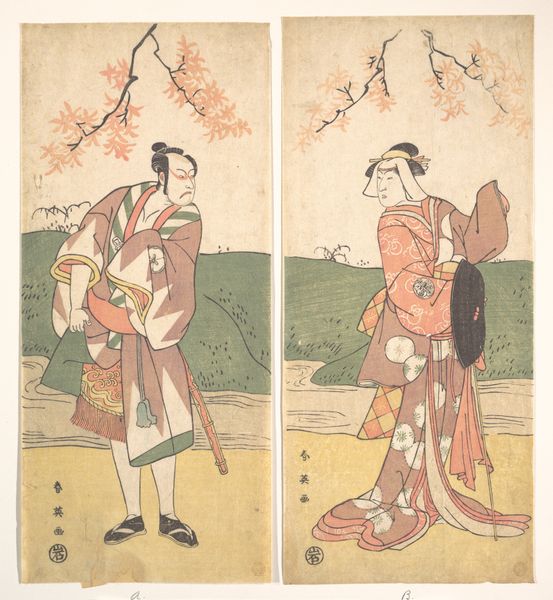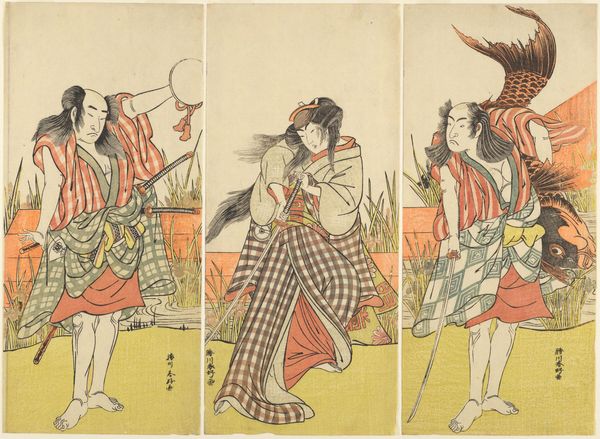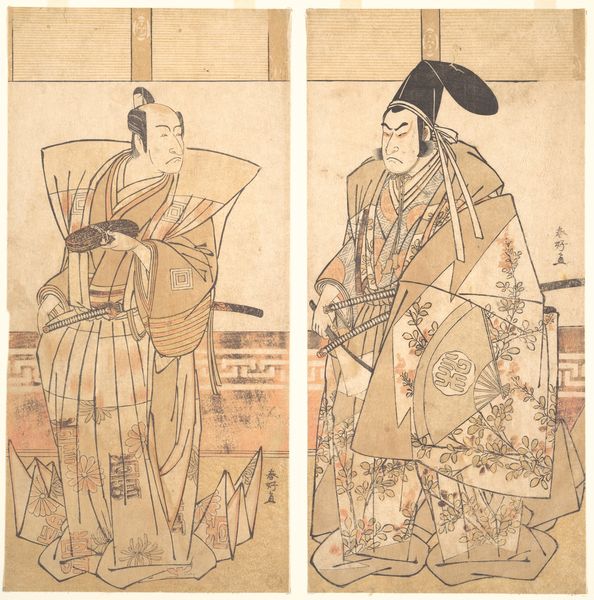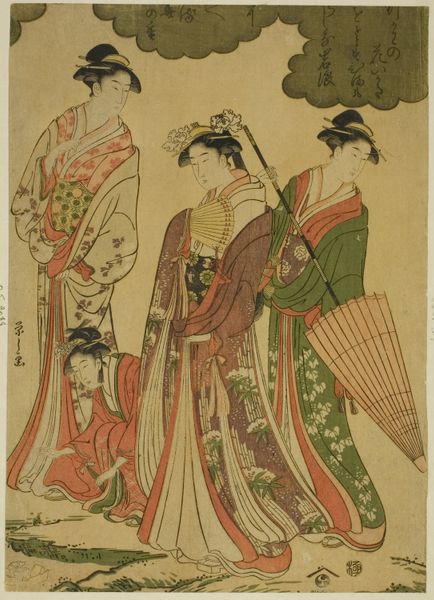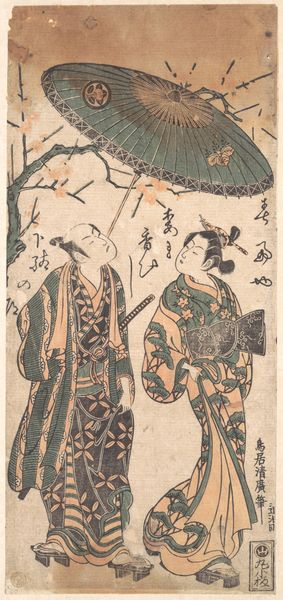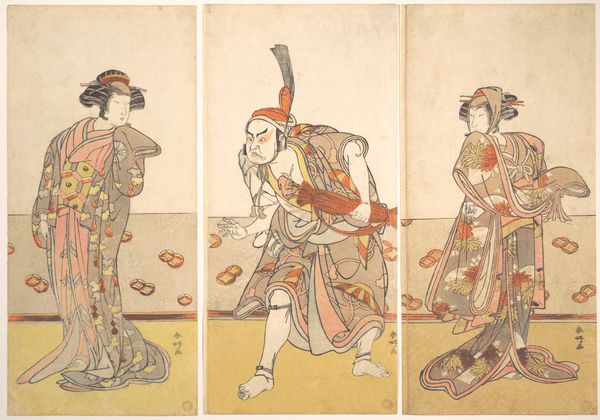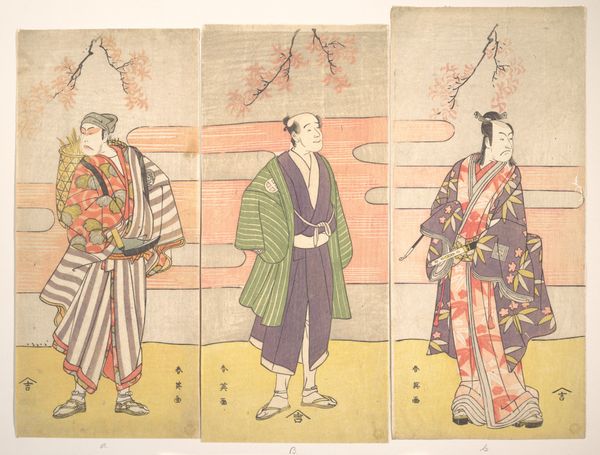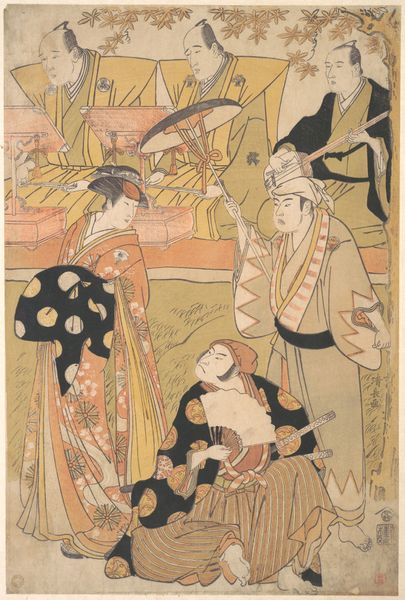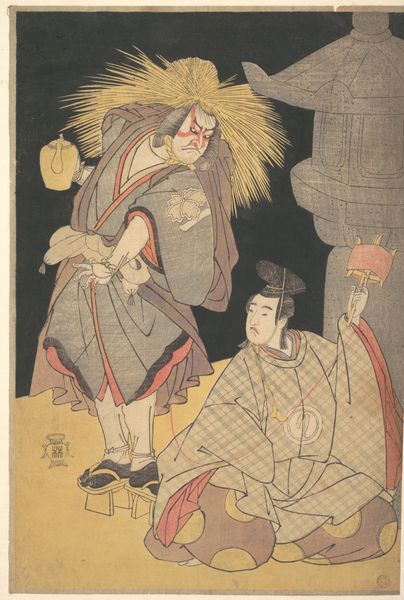
The Actor Ichikawa Komazo Second with Raised Sword 1783 - 1803
0:00
0:00
print, woodblock-print
# print
#
asian-art
#
landscape
#
ukiyo-e
#
figuration
#
woodblock-print
#
sword
Dimensions: Overall: H. 12 9/16 in. (31.9 cm); W. 11 1/2 in. (29.2 cm)
Copyright: Public Domain
Curator: This striking woodblock print, now residing at the Metropolitan Museum of Art, presents the actor Ichikawa Komazo II with Raised Sword. It's attributed to Katsukawa Shun'ei and dates from between 1783 and 1803. Editor: My initial reaction is pure tension. The figures poised mid-action, swords raised... the entire scene exudes a sense of impending conflict, doesn't it? Curator: Absolutely. It embodies a key characteristic of Ukiyo-e prints – capturing fleeting moments of theatrical performance and daily life. The art itself circulated amongst Japanese people widely, functioning much like posters of modern movie stars or promotional art. These were inexpensive and allowed access to all levels of society. Editor: Precisely. And the sword, in particular, is laden with symbolism. It's not just a weapon; it represents power, authority, and the samurai code of honor. The act of brandishing it suggests a challenge, a defiance even, further enhancing that sense of drama. In each panel, there's a great emphasis on pattern and decoration in the clothing – the sword seems at odds with all the decorative visual noise around it, and adds tension. Curator: That resonates strongly within the historical context of Kabuki theatre. Kabuki gained in popular following in early modern Japan precisely because of such tension and conflict! Think about the specific character that Ichikawa Komazo is embodying here – his costume and the stylized makeup are both visual signifiers, designed to telegraph a specific persona to the audience. What are your impressions? Editor: I immediately notice that this theatrical performance contains within it a clash of symbolic frameworks! Note the difference between the figure on the right versus the figure on the left. While the figure on the left seems locked in mortal combat or confrontation, on the right, the raised sword feels like something almost decorative - just as the cherry blossom designs are, maybe it speaks to more internal struggle, in contrast to external threat, in terms of symbolic weight? The stage-prop element perhaps underscores the actor’s skillful manipulation of symbolism. Curator: Yes, this piece also raises the question of class and visibility. For many years in Japan, members of the samurai class were required to have swords on their persons, to reflect their position and role in society. What's fascinating here, though, is to consider how someone outside the warrior class may attempt to emulate or evoke those symbols. Editor: That gives me much to consider as well about what is real versus constructed! Ultimately, Katsukawa Shun'ei gives us an actor acting, emphasizing and exploring the very symbols by which someone comes to power, whether literally through the samurai class or figuratively on a Kabuki stage.
Comments
No comments
Be the first to comment and join the conversation on the ultimate creative platform.
